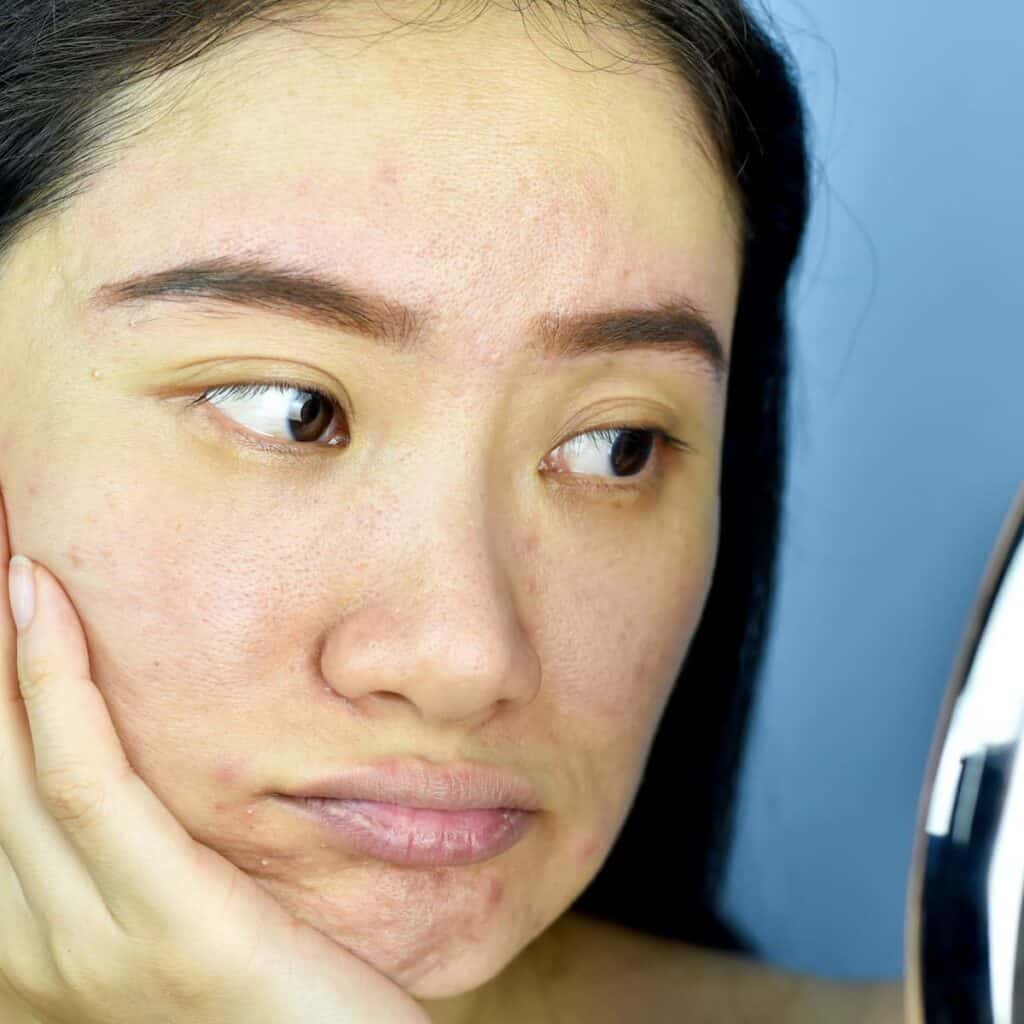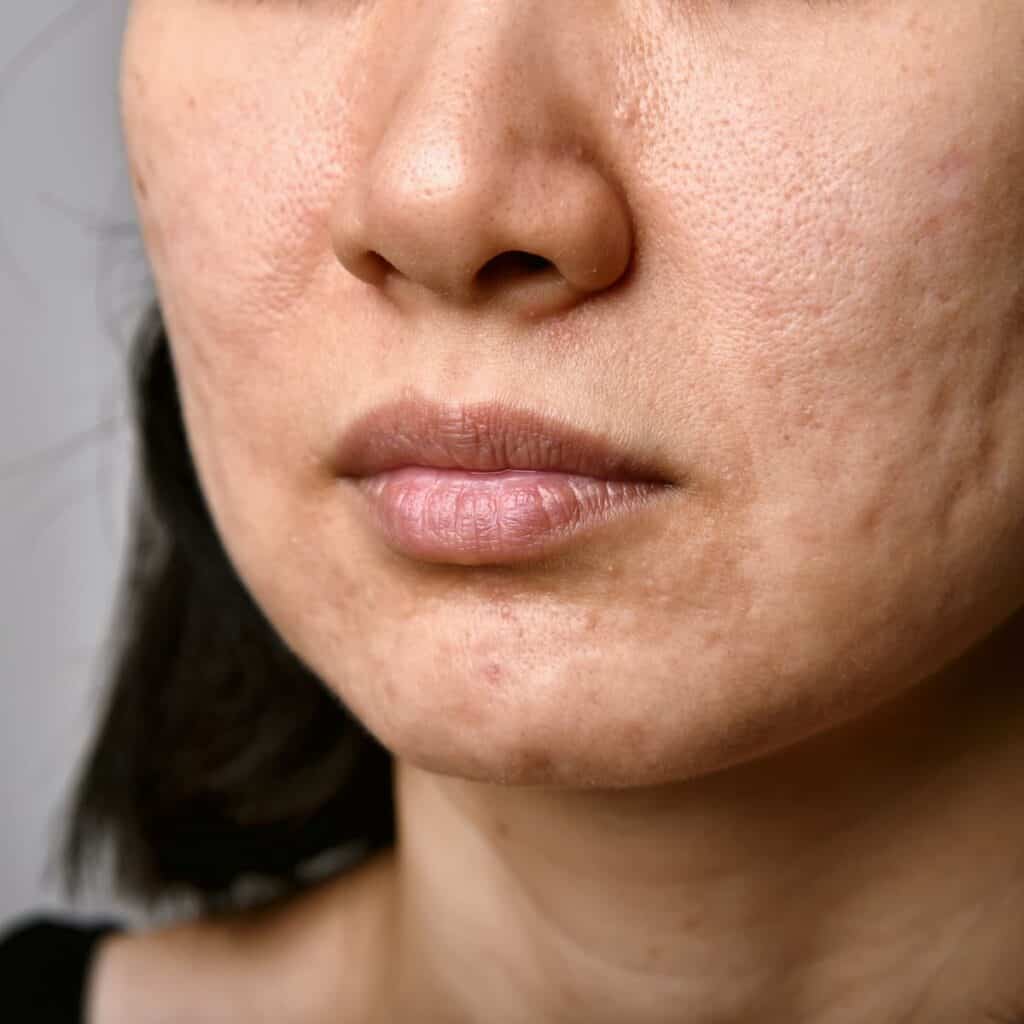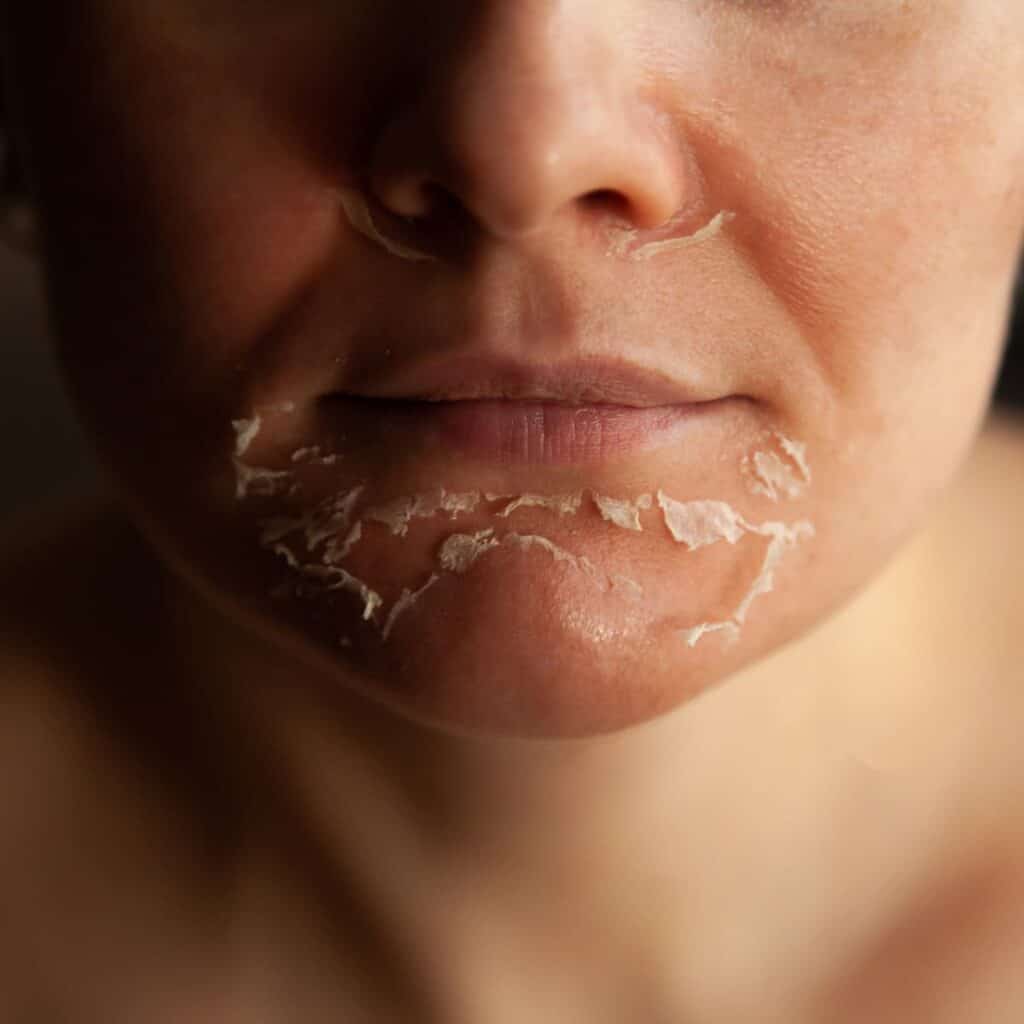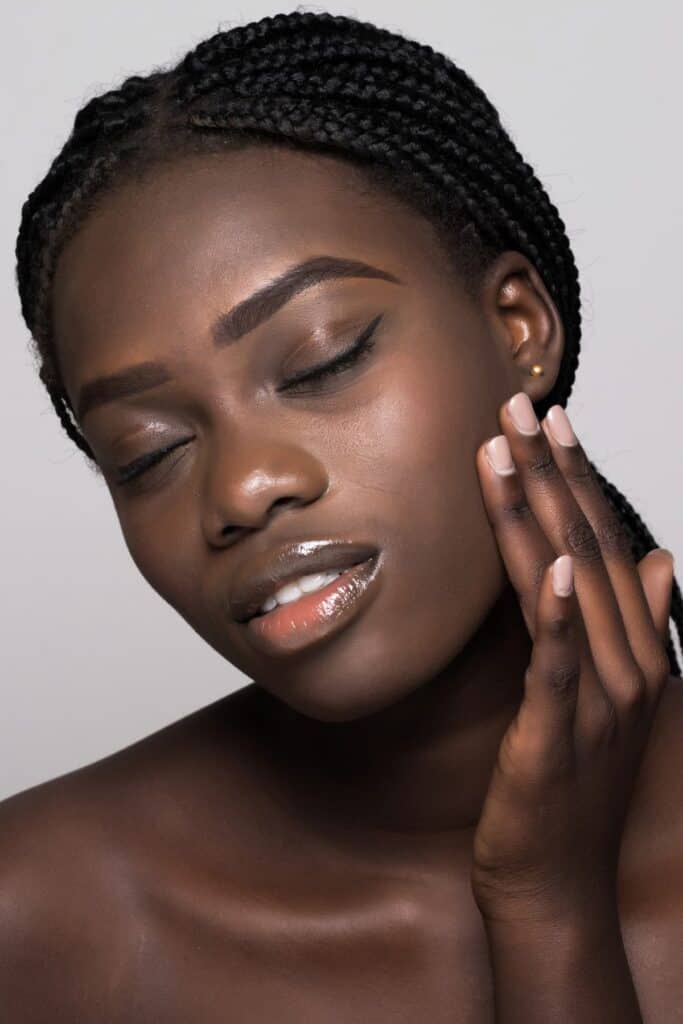Acne scars can be a source of embarrassment for many people. Around one-fifth of people with acne will have acne scars, they’re very common. If you are one of the millions of people whose skin is marked by acne scars, you may be looking for a way to get rid of them. One option that you may want to consider is chemical peel treatment for acne scars. In this blog post, we will discuss how a chemical peel works and how it can help fade certain acne scars.

What Type of Acne Scars can a Chemical Peel Treat?
Chemical peels reduce hyperpigmentation and smooth the skin’s surface, which helps to fade acne scars. Acne scars are divided into hypertrophic and atrophic.
Hypertrophic scars are raised above the skin due to an overproduction of collagen during the healing process. Unfortunately, these scars cannot be treated by a chemical peel.
Atrophic scars are indented into the skin and are divided into three categories: icepick, boxcar, and rolling. These scars can be treated with a chemical peel, although it may take multiple treatments to see results, and, if the scarring is very severe, they may not fade fully.
Although not technically a scar, another common side effect of acne is hyperpigmentation. Chemical peels can help fade hyperpigmentation.

Types of Chemical Peels for Acne Scars
Chemical peels can be light, medium, or deep, but only the first two are recommended for acne scarring. If you have some hyperpigmentation and mild scars a light chemical peel might work. For deeper scarring, a medium chemical peel would be more effective. You may need multiple treatments before you see results.
Best Chemical Peel for Acne Scars and Large Pores
A chemical peel uses acid or a mixture of acids to remove the dead skin cells, revealing new skin underneath and stimulating collagen production. Your clinician will choose the acid and the concentration that will make the best peel for acne scars in your case, based on several different factors, including your skin type.
Glycolic Acid smooths out your skin’s surface and suppresses melanin formation to reduce your acne scarring and hyperpigmentation. While safe for every skin type and tone, you shouldn’t use it excessively if you have darker skin, as it can cause skin discoloration.
Mandelic Acid improves skin texture and treats post-inflammatory hyperpigmentation. It works more slowly than other acids but can still deliver great results. Because it works more slowly, it’s much less likely to cause skin discoloration, making it ideal if you have darker skin.
Lactic Acid is a gentle AHA (alpha-hydroxy-acid) that dissolves the top layer of your skin. It’s safe for all skin types and might be recommended to you if your skin is dry or sensitive.
Salicylic acid is a BHA (beta-hydroxy-acid) that exfoliates while promoting collagen production to improve the texture of your skin. It temporarily reduces sebum production, which means that it’s a great option if you have oily, acne prone skin and is best avoided if your skin type is dry. It’s a light peel, so it won’t do much for deep scarring.
Trichloroacetic acid or TCA can treat atrophic scarring as well as hyperpigmentation. A professional TCA peel is a medium treatment, so it can treat deeper scarring. However, it does require some downtime.

Can a Chemical Peel Prevent Acne Scarring?
Most skincare works best for preventing damage rather than repairing it. A chemical peel is a chemical form of exfoliation, which unclogs pores. This prevents acne and consequently acne scars.
You can also get a chemical peel if you have active acne. Because of the various benefits of a chemical peel, it can treat acne and prevent scarring. Since it promotes collagen production, it speeds up your skin’s healing process.
Things to Consider Before a Chemical Peel
Your doctor might recommend or prescribe antiviral medication to avoid infections, and a retinoid cream to help with healing and avoid side effects.
Apart from that, there are certain things you should avoid. Sun exposure, for example, can cause permanent irregular pigmentation. Make sure you check with your doctor what your best option for sun protection is. And, chemical peel or not, you should always wear sunscreen.
You should also stop certain cosmetic treatments about a week before your peeling. This includes facial scrubs and masks, some hair removal techniques and hair dying, permanent straightening or waving treatments.

How Often Should I Use a Chemical Peel?
The frequency of chemical peels varies depending on the type of peel you’re getting, the severity of the scarring, your age, and the results you want to see. Generally, if you’re getting a light peel you could get one about once a month. If it’s a medium peel, you should wait about four to six months.
Professional vs. Home Chemical Peels
You might see some results with diligent home chemical peels, but professional treatment is much more effective and the results more dramatic and immediate. The concentrations used in professional peels are much higher than those you can find sold over the counter, which means that you’ll see better results with fewer treatments.

A Face Peel for Acne Scars Can Have Immediate Effects
A face peel does involve some recovery time, during it you will see some side effects. Once these fade, you’ll see the results of your chemical peels.
After a light peel, your skin will be irritated, red, and dry during the first week. You’ll start to see new, healthier skin during the second week, but you may still notice some redness or your skin may be lighter or darker than normal for up to a month.
After a medium peel, your skin will be red and swollen, and it will sting. Your doctor might apply an ointment to soothe and hydrate your skin. As it heals, your skin may darken and form a crust. It should take about 7 to 14 days for your skin to heal, but you may notice redness for months.

Alternatives to Chemical Peels for Acne Scars
Apart from chemical peels, some treatments can help improve the appearance of your skin. Maybe your skin would benefit from a few different treatments, or maybe there’s one that’s just right for you.
- A good home skincare routine with chemical exfoliants and sunscreen.
- Soft tissue fillers plump the skin over atrophic acne scars with injections of collagen, fat, or other substances to make them less noticeable.
- Steroids can improve the appearance of hypertrophic scars.
- Laser resurfacing uses a laser to remove the top layer of skin with precision.
- Pulsed light and radiofrequency can make scars less visible without damaging the outer skin layer.
- Dermabrasion removes the top layer of skin with a rapidly rotating brush, it’s usually used for more severe scarring.
- Skin needling promotes collagen production by causing micro-injuries to the skin.
- Botox relaxes the skin around the scars, which can sometimes pucker.
- In a punch excision surgery, the individual scars are cut out and the wound stitched.
Acne scarring is incredibly stubborn, but there are treatments available that can improve their appearance. If your acne scars are something that worries you, you could try some things to reduce the scarring. Chemical peels are just one option out of many.

